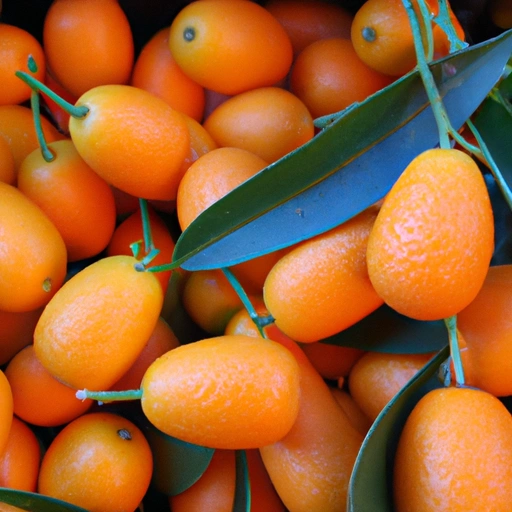Kumquat
Description

The kumquat is a small, oval citrus fruit that is often eaten whole, including its peel. It has a sweet outer skin with a contrasting tart inner flesh, which makes it a unique and zesty addition to a variety of dishes. Kumquats are typically the size of large olives, measuring about 1 to 2 inches in length (2.5 to 5 centimeters) and around 20 to 30 grams each. When using kumquats in recipes, it is common to see measurements in both metric and imperial units, ranging from grams and milliliters to ounces and cups, accommodating for cooks and food enthusiasts around the globe.
Common uses
Kumquats are commonly used in culinary applications that require a touch of citrus flavor. They are eaten fresh, candied, or used as a garnish for beverages and desserts. Kumquats are also a popular ingredient in marmalades, jellies, and preserves due to their high pectin content. Additionally, they can be sliced or chopped to add a unique tangy taste to salads, relishes, and chutneys.
Nutritional value
Calories
Kumquats are low in calories, with about 13 calories per fruit (19 calories per 100 grams).
Protein
These tiny fruits contain approximately 0.9 grams of protein per 100 grams.
Fat
Kumquats are virtually fat-free, with only 0.2 grams of fat per 100 grams.
Carbohydrates
They have about 15.9 grams of carbohydrates per 100 grams, mostly from natural sugars and dietary fiber.
Vitamins
Kumquats are an excellent source of Vitamin C, providing approximately 43.9 mg per 100 grams, which is about 73% of the Recommended Dietary Allowance (RDA). They also contain small amounts of Vitamin A and other vitamins.
Minerals
Rich in several minerals, kumquats provide calcium (62 mg/100g), potassium (186 mg/100g), and magnesium (20 mg/100g), among others.
Health benefits
The high Vitamin C content in kumquats makes them beneficial for boosting the immune system and combating free radicals. The dietary fiber aids in digestion and may help in managing weight by promoting a feeling of fullness. Additionally, the presence of antioxidants, flavonoids, and essential oils may contribute to overall health and well-being.
Potential risks
While kumquats are generally safe to eat, they contain seeds that some may find bitter or unpleasant. Furthermore, as with all citrus fruits, kumquats contain citric acid, which may cause dental erosion if consumed in excess. People with citrus allergies should also avoid kumquats.
Common recipes
Kumquats are featured in an array of recipes, from kumquat marmalade to glazed kumquat pound cake. They are also used in savory dishes, such as kumquat-glazed chicken or duck, and in grain salads where their brightness complements the flavors.
Cooking methods
These versatile fruits can be candied, poached, roasted, or incorporated raw into dishes. They are often used whole, sliced, or pureed to impart their distinctive taste.
Pairing with other ingredients
Kumquats pair well with a variety of flavors, including honey, ginger, seafood, poultry, dark chocolate, and strong cheeses like blue cheese or goat cheese. Their tanginess also complements the richness of nuts such as almonds or walnuts.
Summary
Kumquats are a distinctive, versatile citrus fruit enjoyed around the world in a myriad of culinary applications, from sweet to savory. They are not only celebrated for their unique flavor but also for their nutritional benefits, including Vitamin C and dietary fiber. Whether used fresh, candied, or as a flavor enhancer in a dish, kumquats offer a delightful citrusy zing that can elevate any recipe.